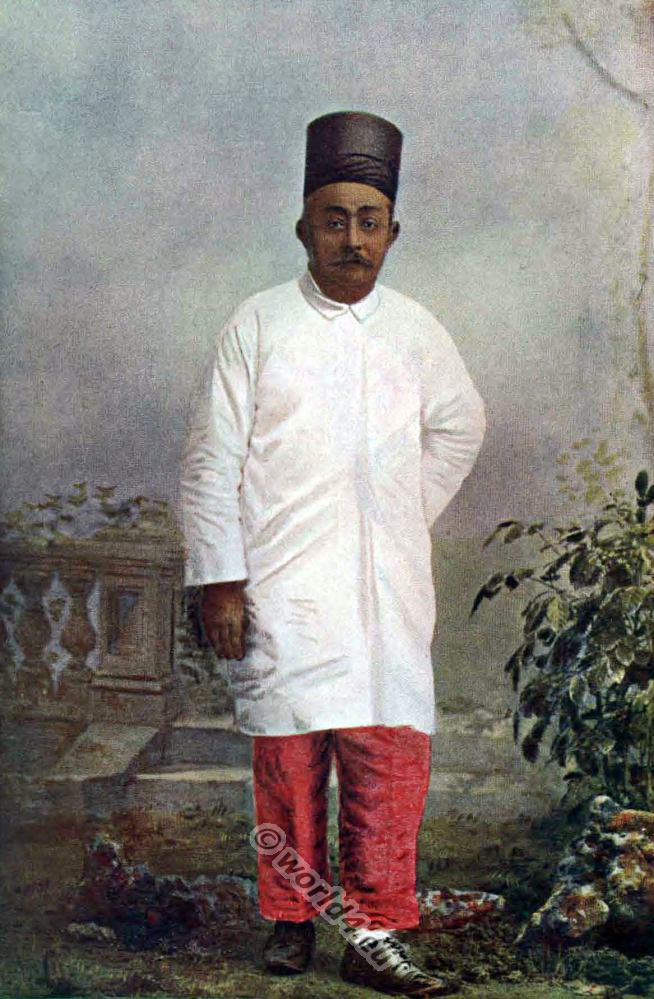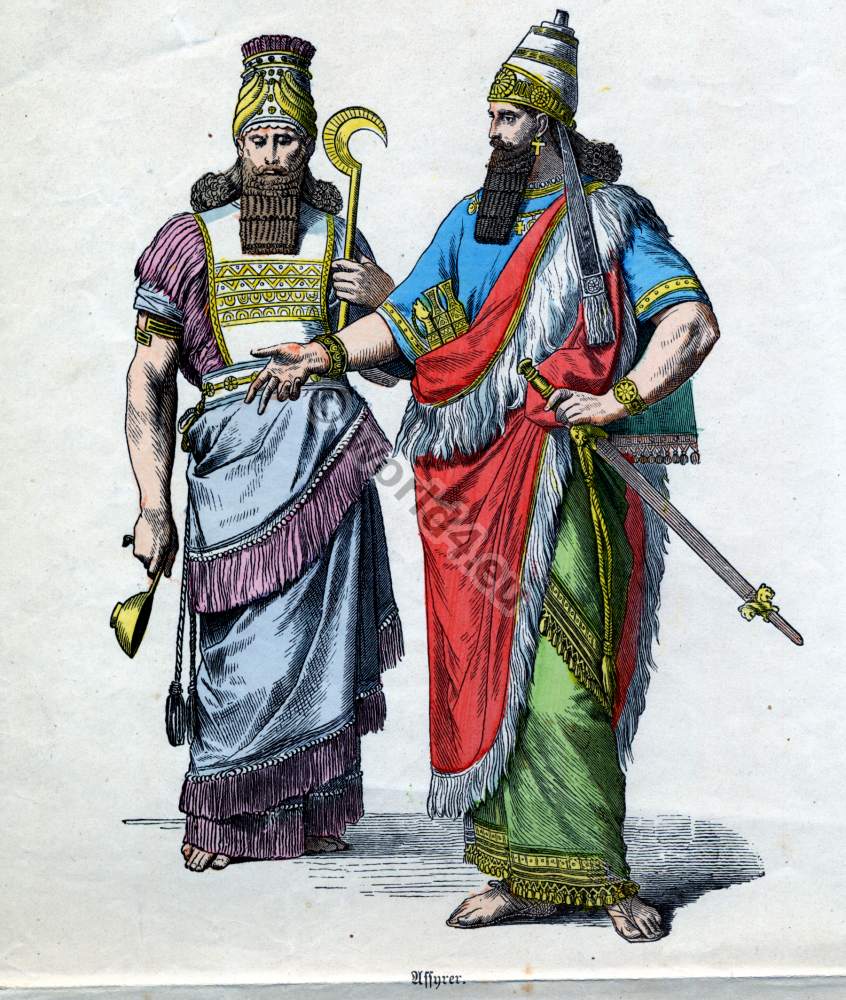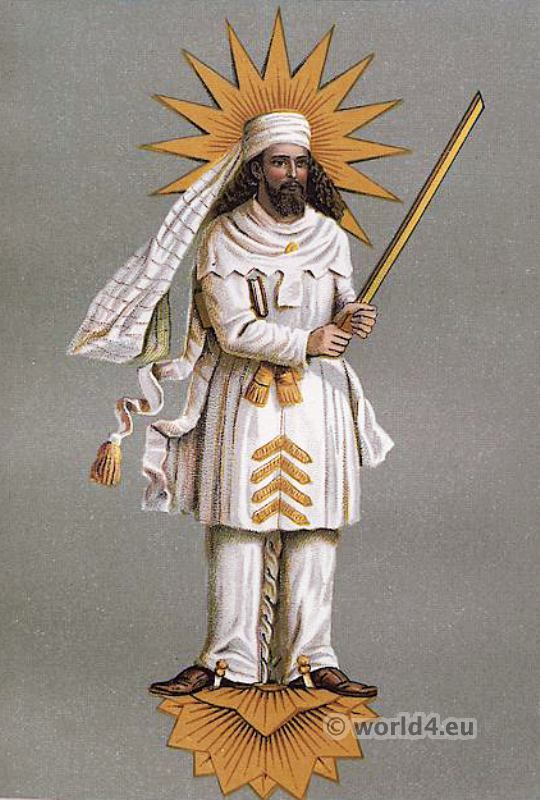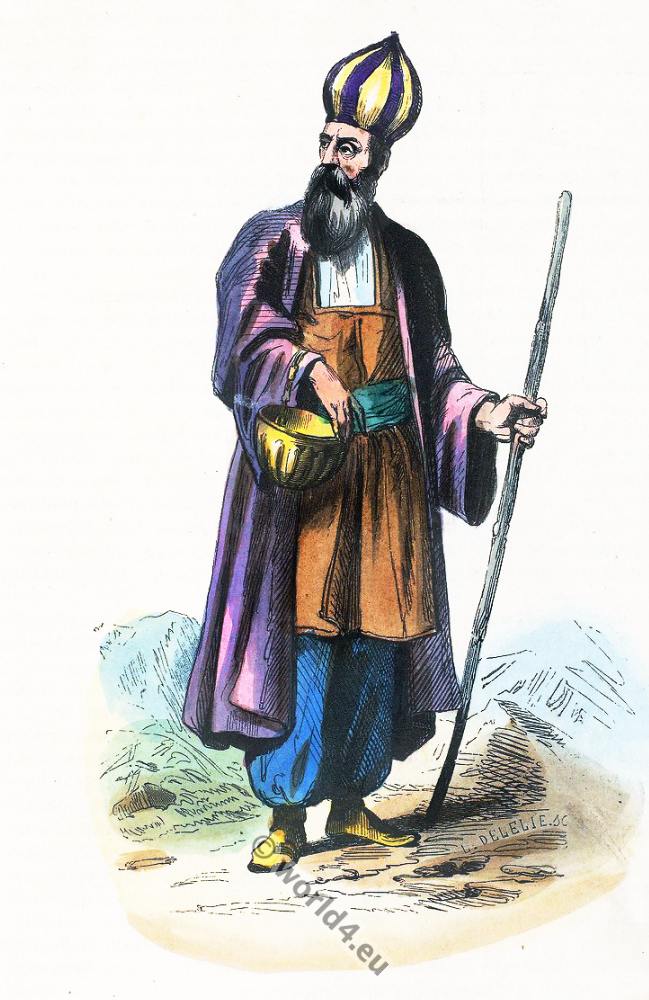THE PARSEE.
The advantages derived by the natives of India from the British conquest of the country have in no instance been so marked as among the Parsees. Before that event had been consummated, they were literally the hewers of wood and drawers of water for their rulers, whereas at the present time they have been enabled to become one of the most enlightened and wealthy races in the West of India.
The hat worn by the Parsees is not their own original form of topi, although frequently regarded as such, but is similar to that worn by a section of the inhabitants of Gujarat.
They are of Persian origin, having fled from their country about the year 716, in order to escape from the tyrannies of their Mohamedan conquerors, and are supposed to have first settled in the island of Diew, near the coast of Kathiawar; shortly afterwards, however, they changed their quarters for Gujarat. Here they were only permitted to remain on condition that they adopted the language of the country, and dressed their women in Indian garb. At the present day their community numbers about 70,000 persons, inclusive of those who have settled in China and elsewhere. Very few Parsees engage in agricultural pursuits, nor do we find a single soldier among them. Many learn trades, and the commercial world in general finds numerous recruits from their ranks.
The indoor male costume consists of a muslin shirt, a pair of loose white cotton trousers, a cotton waistcoat with sleeves, a skull cap and slippers.
For outdoor wear, a long loose coat of cotton or cloth is added, and, in addition to the cap, a hat or turban is worn. There is also a special costume, worn only on the occasion of a funeral and a wedding, which consists of a long double-breasted white cotton coat, gathered in at the waist by a broad white sash, and reaching to the ankles.
A peculiarity of the Parsees is their manner of disposing of the dead. In Bombay, and certain other large towns in Western India, they have erected what are called “Towers of Silence.” (Dakhma, Persian: دخمه, “Cheel Ghar“) These consist of circular structures, built of stone, from twenty to thirty feet high, the diameter of the largest being ninety feet. Inside the tower is a circular pavement, shelving towards the centre, which terminates in what may be called a well, forming the centre of the tower. On this pavement are three circular rows of wide grooves, about an inch in depth, in which the bodies are deposited. In the course of about an hour vultures have completely stripped the flesh from the bones, which are afterwards thrown into the pit in the middle of the tower, where they eventually crumble into dust.
The Parsees are followers of the Zoroastrian faith, which admits of the belief in a Supreme Being; but the very prevalent supposition that they are worshippers of the sun, or of fire, has no foundation in fact. In offering prayers, their faces are turned towards the sun, as being one of the most powerful symbols of the Almighty, and from this has probably arisen the mistaken notion.
Source: Typical pictures of Indian Natives. By F. M. Coleman, 1897.
Related
Discover more from World4 Costume Culture History
Subscribe to get the latest posts sent to your email.







